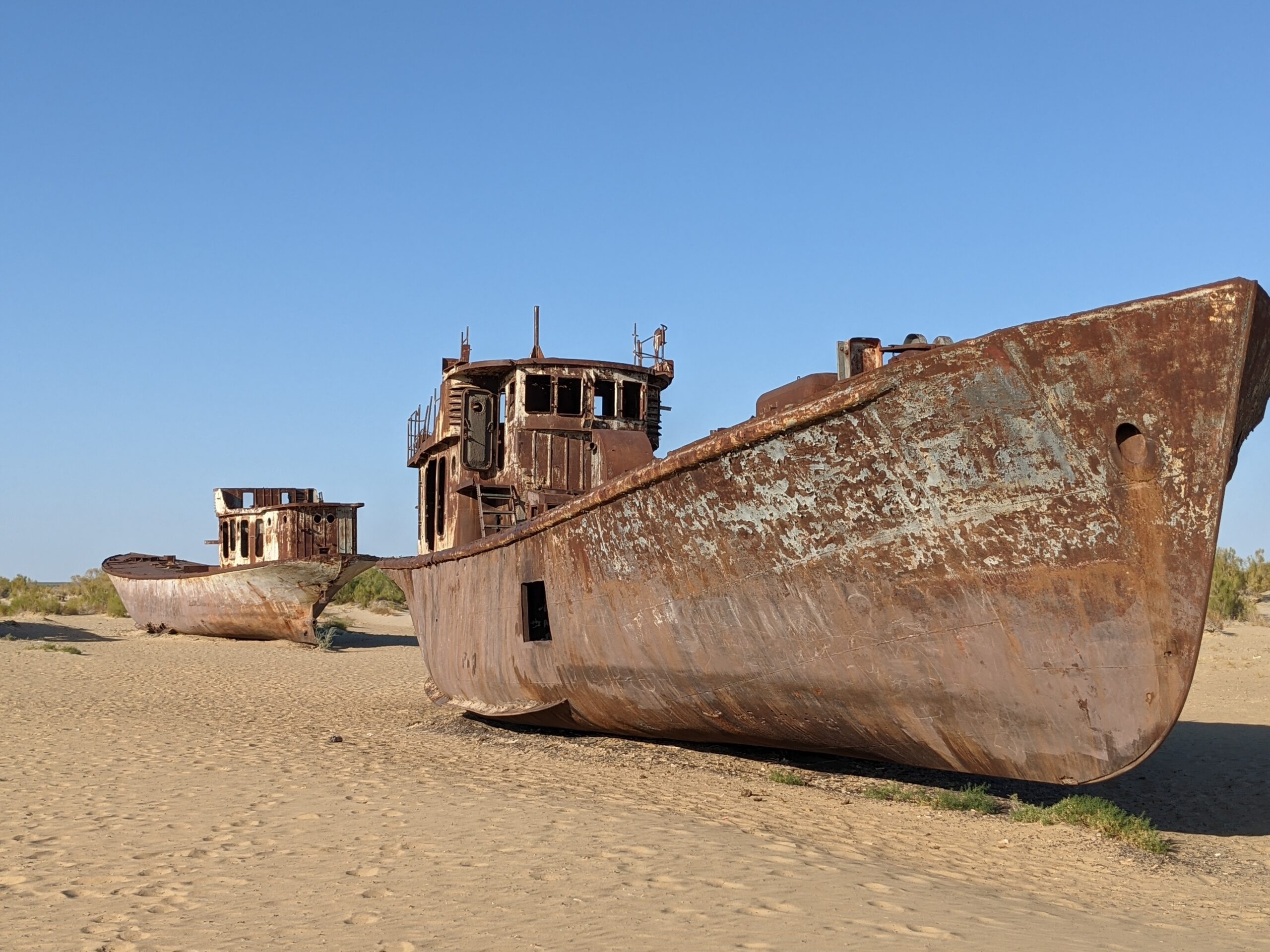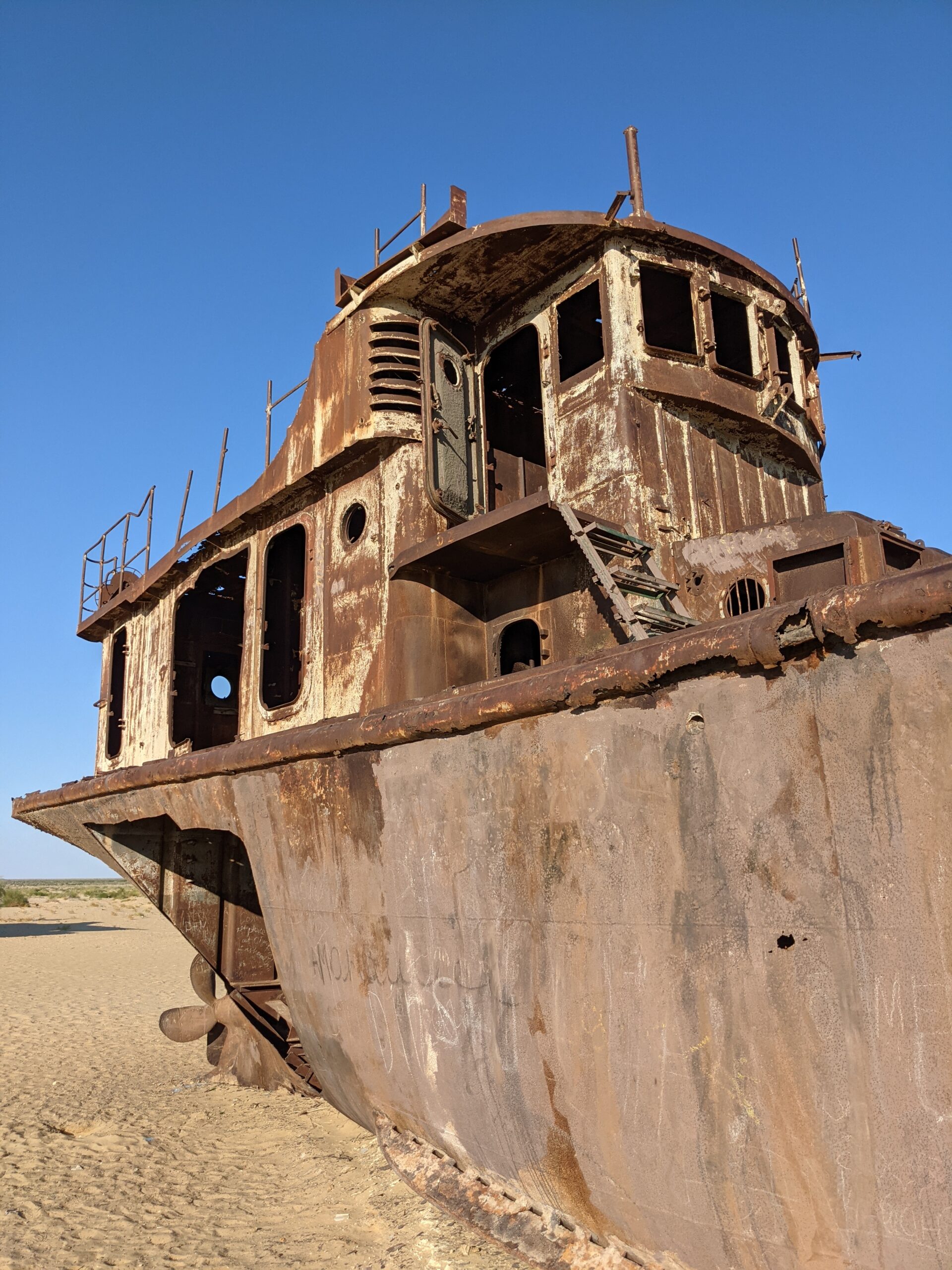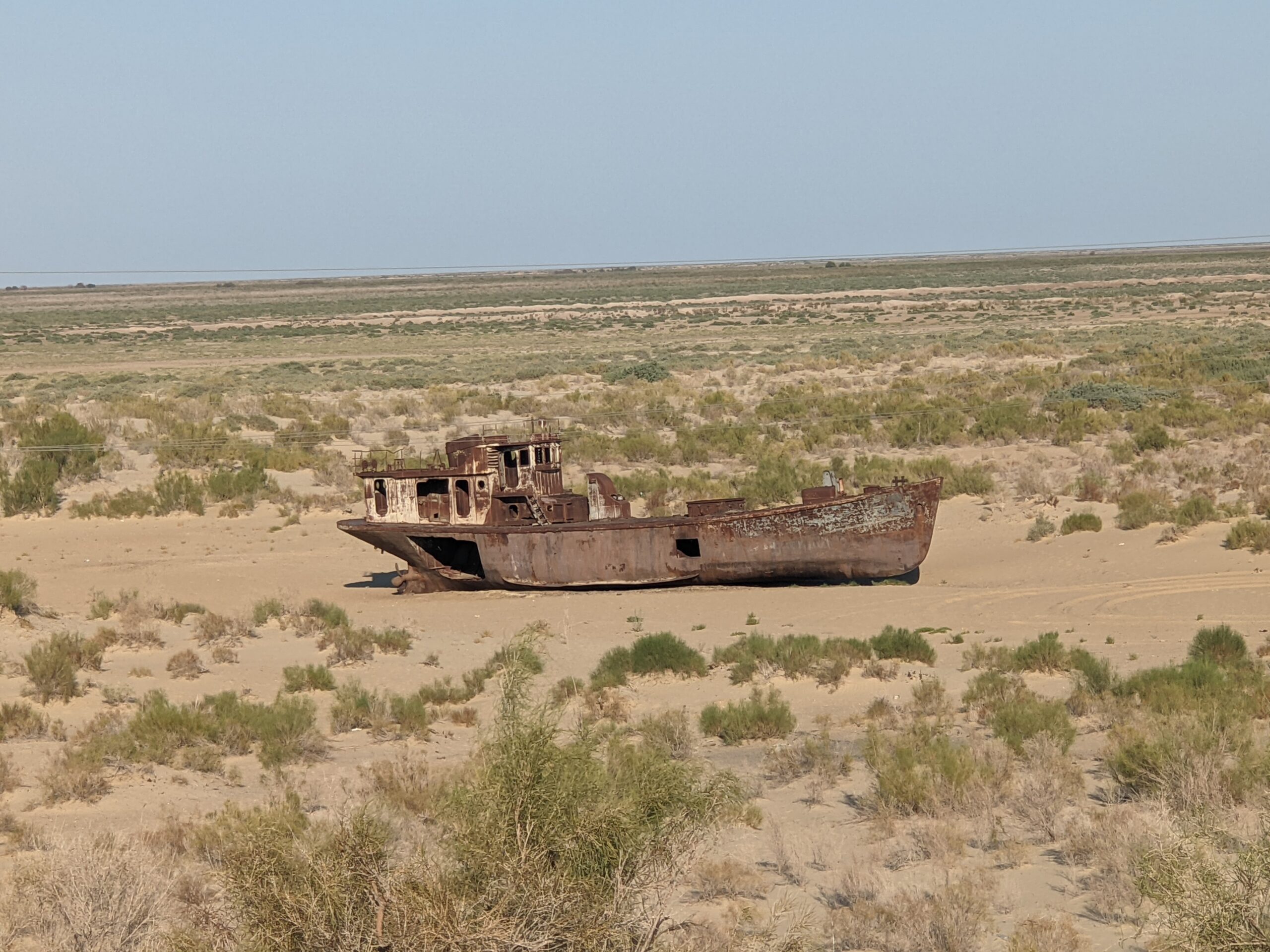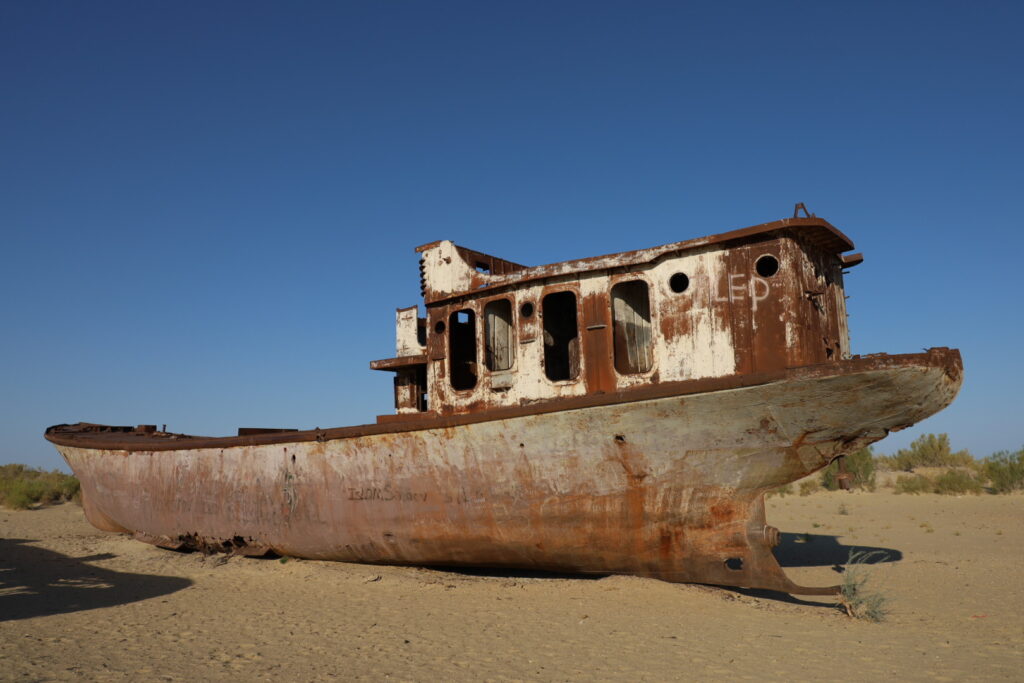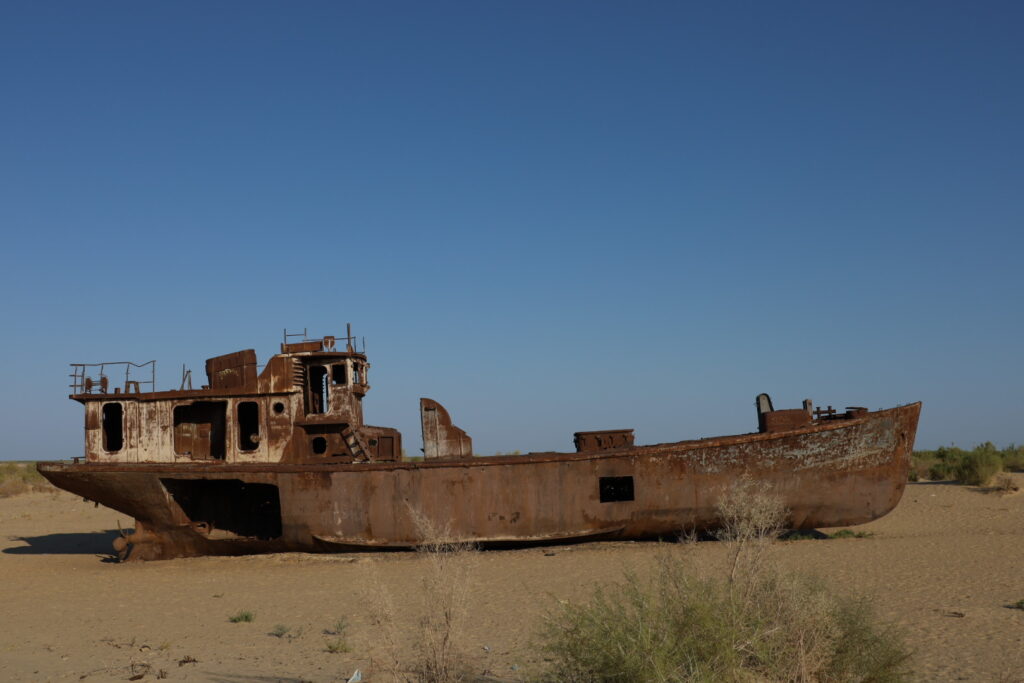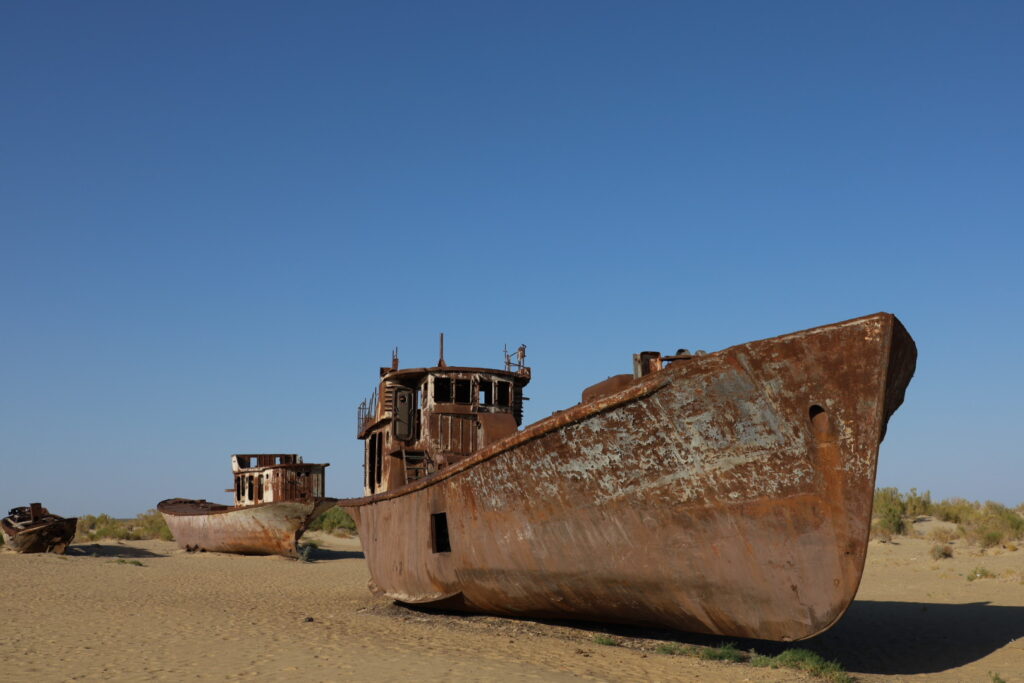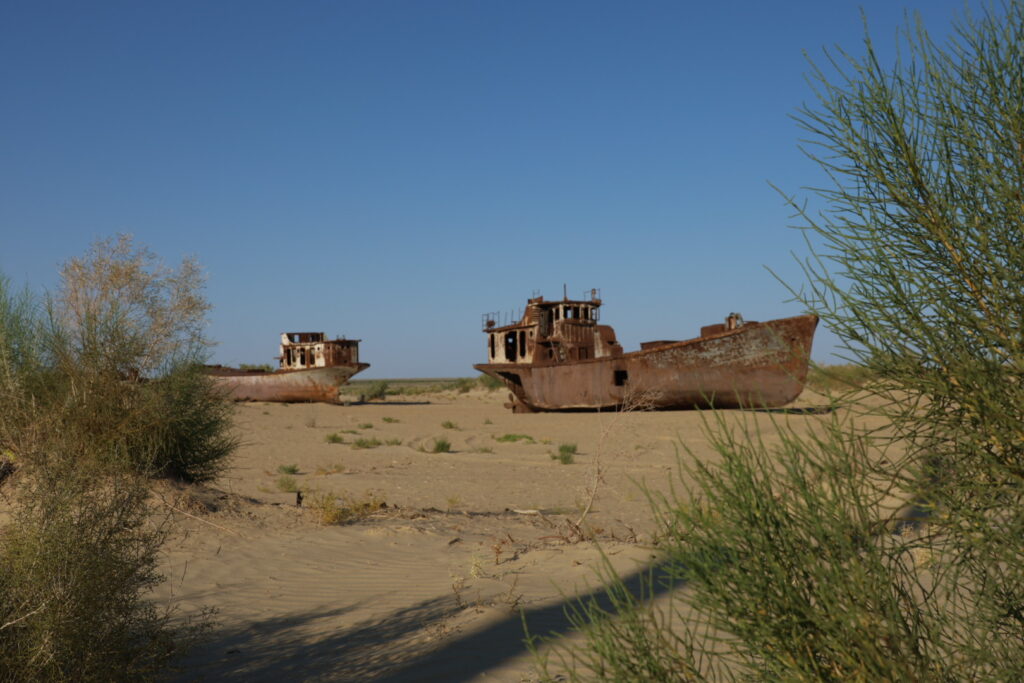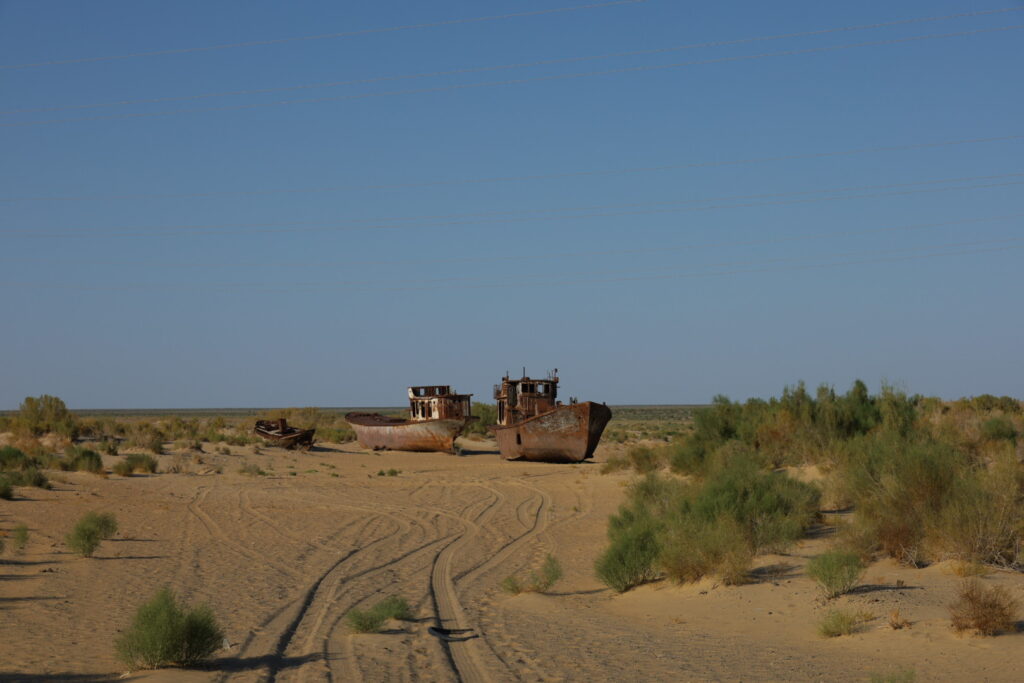This one’s going to be kind of short. I’m really tired. We’ve been driving all day. We woke up early, ate breakfast, and drove eight hours west from Khiva to get to Muynak to see the ships stranded in what we’re calling the Aral Desert.
If you’re reading this and planning the drive for yourself, it really should be a six-hour drive, we had some issues, but made it okay in the end.
The Aral Sea used to be a HUGE salt lake in the far west of Uzbekistan on the Kazakh border. It was so huge in fact that they called it a sea. It was gigantic.
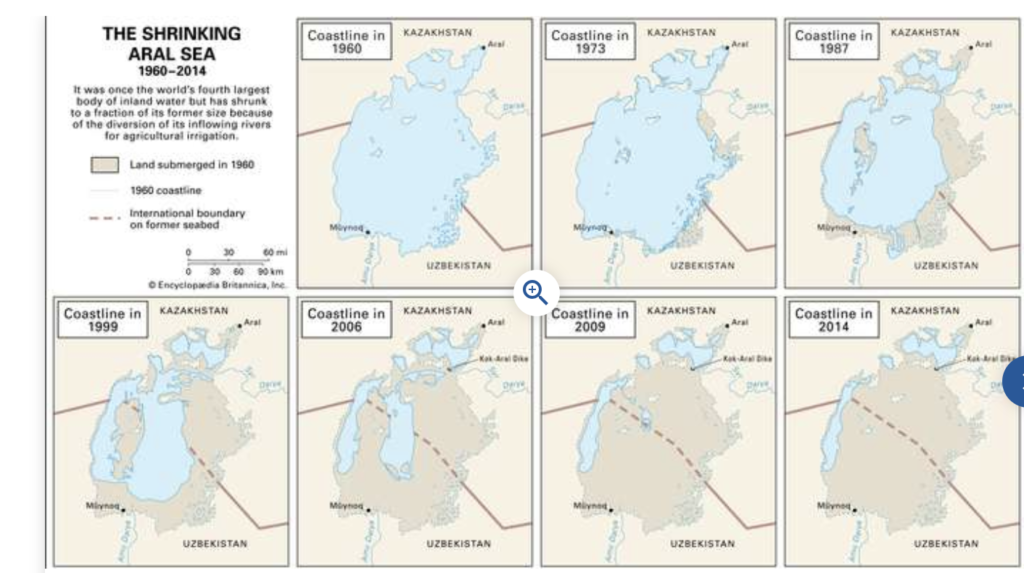
Back in the 1960’s the Soviet’s decided to divert the two fresh water rivers that fed into it to farms. This was bad news for the lake. Between no new water coming in from the rivers and climate change the lake started to dry up. By the 1990’s the lake was left almost nothing compared to what it had once been. Entire villages that had made their livings from the lake were left nothing but ghost towns. Fisheries were abandoned.
Today the Aral Sea is little more than a few lakes broken up with dry land in-between and each gets smaller and smaller year by year.
And why are we here? To see these ships and to see the musem. These ships were once in the lake. Now it’s nothing but desert for as far as the eye can see. In fact, the closest water to here is 140 km away, a three hour drive. This city used to be on the lake. The museum was closed so we didn’t get to see it. It’s supposed to have lots of pictures and information about what the city was like in its glory days.
The ships stranded in the desert are a testament to what poor planning and climate change can lead to. I hope you’re paying attention.
